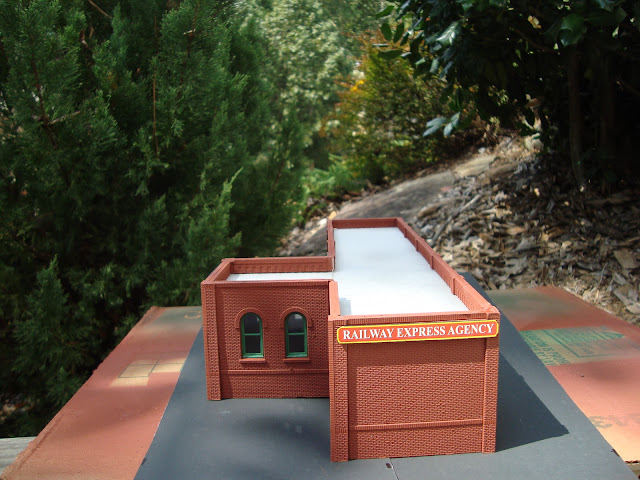Greetings Blog Followers,
As you can see by the name of this blog I model the late great New York Central System. The NYC as it was also known was a class 1 railroad that served the most populous and industrial areas of the United States. The NYC lasted until February 1, 1968 when the mighty NYC combined forces with another decaying Northeastern railroad and it's primary rival the Pennsylvania Railroad, formerly billed as the Standard Railroad of the world to become the Penn Central Transportation Company, or the PC. This is the period that I enjoy modeling. Finding diesel locomotives painted for this time period is not an impossible task and can be quite easy if one is willing to spend the money. Being frugal I began painting my own locomotives about two years ago. As of this writing I have now painted a total of 18 locomotives, 12 for the New York Central and six for the Penn Central. This does not include re-numberings or adding a decal or two to a factory paint scheme. Here is a sample of the do it yourself painted fleet...
A Penn Central EMD lash up consisting of an SD40, A GP40 and two GP35s. All four are Athearn Blue Box models. Each unit was an actual locomotive owned by the Penn Central.
Penn Central SD40 #6282
Penn Central GP40 # 3175. PC GP40s 3170-3186 received this special paint scheme with the orange "C"
Penn Central GP35 #2252 received the red "P" that was also a special paint scheme and much more widely used than the orange "C". The red "P" was on many different types of units.
Penn Central GP35 #2327 in the standard large white PC scheme which was also known as the "mating worms logo"
New York Central GE B23-7 #3893 coupled to sister locomotive #3683. Both locomotives are Bachmann Plus models
New York Central B23-7 #3683. The NYC did not have any B23-7s on their roster
NYC EMD GP35 # 2937 coupled to NYC EMD GP40 2933. Both locomotives are Athearn Blue Box models
NYC GP40 # 2933
NYC EMD GP9s #505 coupled to sister GP9 #412 and SD24 #9844. The GP9s are Athearn Blue Box models and the SD24 is an older Atlas model
NYC GP9 #412 and #505 sport the short lived scripted herald logo.
NYC SD24 # 9844 has the scripted heralds on the cab sides and the traditional nose logos on the front and rear.
NYC Fairbanks-Morse H-16-44 #7698 is a Spectrum model
NYC Fairbanks-Morse #7340 is also a Spectrum model
NYC EMD GP30 # 2728 is a Spectrum model
NYC EMD GP30 # 2526 is a Spectrum model
NYC EMD GP30 # 2324 is a Spectrum model























































